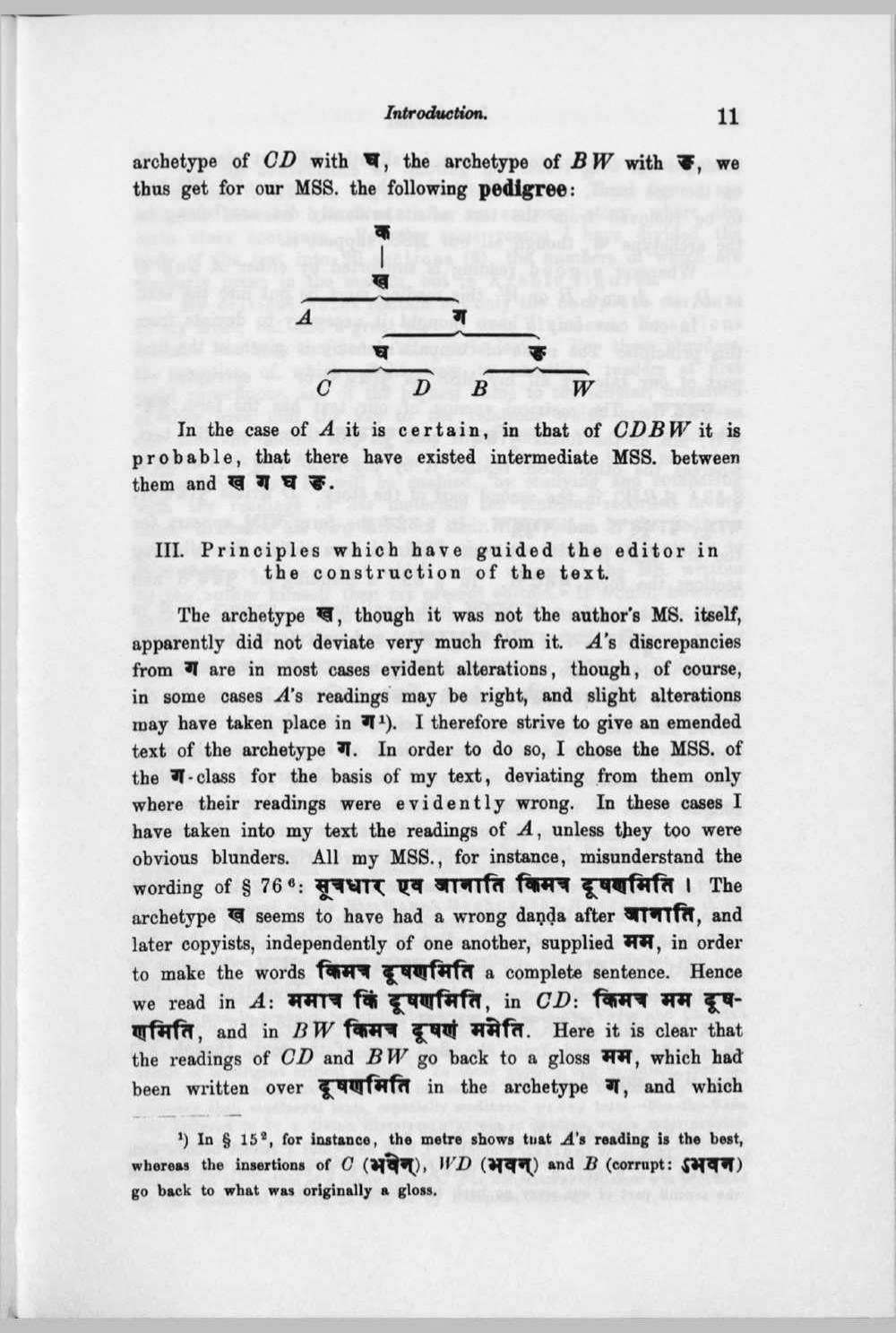________________
Introduction.
archetype of CD with , the archetype of BW with thus get for our MSS. the following podigree:
, we
5
-
9
DB
In the case of A it is certain, in that of ODBW it is probable, that there have existed intermediate MSS. between them and C
.
III. Principles which have guided the editor in
the construction of the text.
The archetype , though it was not the author's MS. itself, apparently did not deviate very much from it. A's discrepancies from o are in most cases evident alterations, though, of course, in some cases A's readings may be right, and slight alterations may have taken place in ). I therefore strive to give an emended text of the archetype 7. In order to do so, I chose the MSS. of the 7-class for the basis of my text, deviating from them only where their readings were evidently wrong. In these cases I have taken into my text the readings of A, unless they too were obvious blunders. All my MSS., for instance, misunderstand the wording of 8760: सूत्रधार एव जानाति किमत्र दूषणमिति । The archetype seems to have had a wrong daņņa after stufa, and later copyists, independently of one another, supplied HH, in order to make the words fm quufafa a complete sentence. Hence we read in A: HTTfo ufafa, in CD: H HH - णमिति, and in BW किमच दूषणं ममेति. Here it is clear that the readings of CD and BW go back to a gloss HA, which had been written over gufafat in the archetype 3, and which
2) In § 15, for instance, the metre shows tuat A's reading is the best, whereas the insertions of C (apa), WD (
a t) and B (corrupt: Saya) go back to what was originally a gloss.




